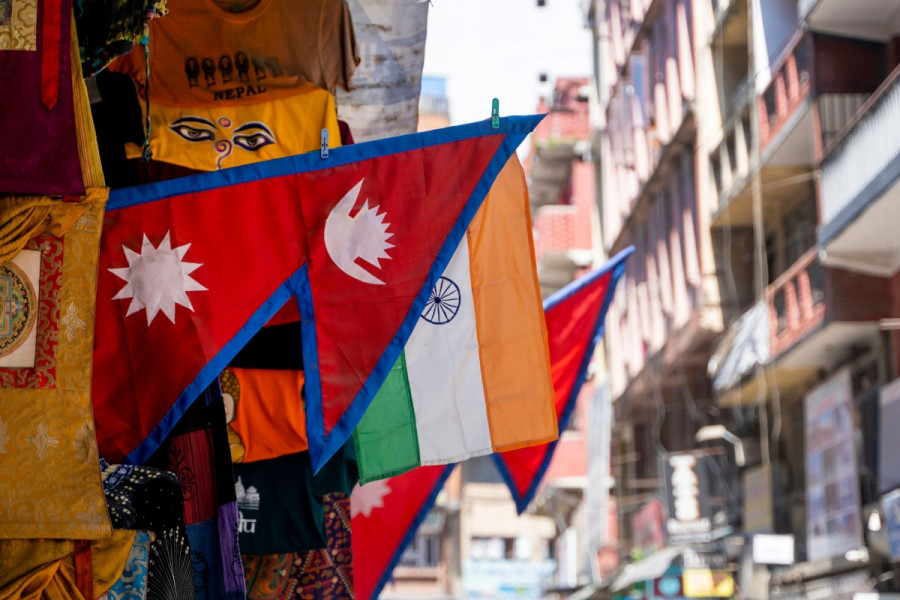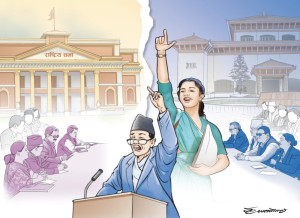Mon, Jan 5, 2026
Columns
Peoples, missing in broader narratives
Investing in communities will help foster more meaningful Nepal-India ties.
bookmark
Sanjeev Satgainya
Published at : September 14, 2024
Updated at : September 15, 2024 07:13
In the first week of August, I was in India, on a second visit exactly a year after. This time, my wife and I decided to hop on trains—Delhi to Dehradun to Lucknow to New Jalpaiguri; our journey punctuated by brief halts of two-three days in each city.
Taking a train, we wanted to grab an opportunity to meet people—and more people—along the journey. There was no reason to be disappointed. We met new people, made new friends, shared contacts and even promised: “See you again.”
Trains have always fascinated me since my childhood when I got my first experience on the locomotive from Rupaidiha to Nanpara. For someone who grew up in a Nepalgunj village, I had many friends at whose homes I would play and eat, not having an iota of knowledge that I was crossing the border in doing so and that they were actually Indians, not my compatriots.
For my Kathmandu-born wife, India, however, seemed kind of alien to her. That’s until 2015 when she first flew to Kochi (Kerala) for a brief language course. Post-2015, we must have travelled together to various parts of India—it would be an overstatement to say the length and breadth of that mammoth nation, but of course from north to south and west to east—a dozen times or more. Over the years, both of us have found new things and have made new friends.
Which India, which Nepal?
In Nepal, and among many Nepalis, there are different Indias. For those born and grown up along the plains, one image of India is integral to their lives. Another India provides people from far-flung remote western districts with a means of livelihood. For those in Kathmandu and some hill regions, there is one India that harbours a dark malevolence. For some ultranationalists and a section of Nepali politicians, there is another India that is expansionist, a hegemon and a major threat to Nepal’s sovereignty.
In India, and among many Indians, the case, however, seems to be a bit different. Those in New Delhi’s power corridors often see Nepal as their backyard. And there are Indians, the peoples, who either know or do not know about Nepal. Some of the remarks from fellow passengers I encountered during my recent trip: “I have been planning to worship at Pashupatinath temple; by the way, how far is Pokhara from Kathmandu?”, “Nepal itself is such a beautiful country and yet you come to India for a vacation?”, “Why do you have so many government changes so frequently? Who is the prime minister now?”, “Have been up to the border (Rupaidiha or Raxaul) but have never been to Kathmandu. I must visit Nepal.”
Variables at play
Different variables shape up, strengthen or weaken relations between any two countries. Policymakers and leadership, however, often tend to put excessive focus on some and completely ignore others, which may actually need more attention.
The conduct of Nepali politicians and the Indian establishment’s tendency to view things through the warped prism often tend to make already challenging relations even worse. Amid the rapid flux in the region and the world, Nepal and India are likely to face more challenges and complexities, but in the larger interest of both countries, they must manage and address them in such a way that they do not derail the core relations.
Kathmandu and New Delhi, in the past years, have been struggling to smooth out the irritants, but while doing so, both should not forget that the peoples of the two countries make the strongest linkage between these two civilisations.
Any exercise by the leadership of either country to take the other head on at the expense of peoples will never allow the relations to be on an even keel. Even today, there are a number of genuine concerns of Nepalis visiting India vis-à-vis mobile connections and digital payments, even though they are, on paper, said to have been addressed. There is a need to sensitise and aware officials on both sides of the border when dealing with the peoples of the two countries. These are some issues that do not cost much but pay off immensely in the long run to strengthen relations.
The Nepali leadership often tends to demonstrate proclivity to stoke hostility towards India, especially when they attempt “to settle a score” with New Delhi. The Indian establishment, which may comprise multiple constituents, including foreign policy mandarins, on the other hand, does not hesitate to sow the seeds of paranoia of losing Kathmandu’s “loyalty” to China.
In the wake of recent events in the region, it must have dawned upon New Delhi that if it wants to earn the goodwill of its neighbouring states, it should invest in communities and peoples instead of individual leaders. The Nepali leadership, which is at present dealing with an unprecedented wrath of the public for the delivery deficit, will do well not to have their priorities misplaced.
Nepalis here and there
In 2016, when my wife, son and I arrived at Varkala in Kerala, the man who had come to pick us up at the railway station was a Nepali. He took us to the hotel we had booked, which was owned by a Nepali. In the next three days, we learned that every resort along the Varkala Beach had Nepalis—either managing or working.
“We are vacationing in India without needing to speak any other language but Nepali,” quipped our son, then 11. “Just that they don’t give us SIM cards here!”
Most Read from Columns
Editor's Picks
Nepal’s workplaces still fail new mothers
When will Nepali-origin professional footballers in Europe play for Nepal?
‘Like a dream’: Labourer from Dalit community secures full MBBS scholarship
Why Nepal is launching a system to track foreign nationals
Nepal achieves global vaccine target, seven years ahead of schedule
E-PAPER | January 05, 2026
×




 5.39°C Kathmandu
5.39°C Kathmandu













%20(1).jpg&w=300&height=200)

